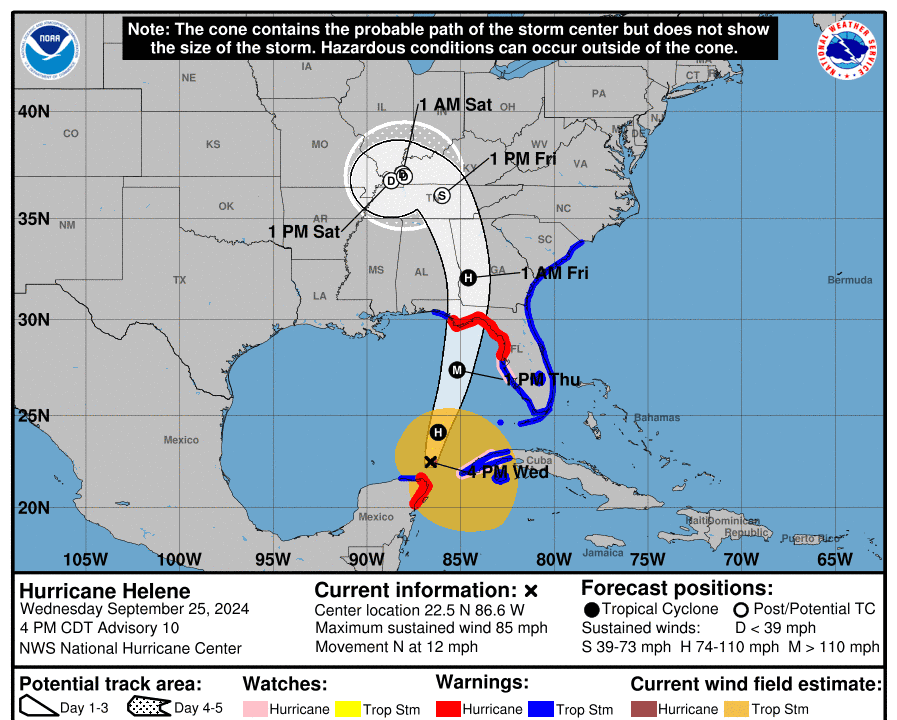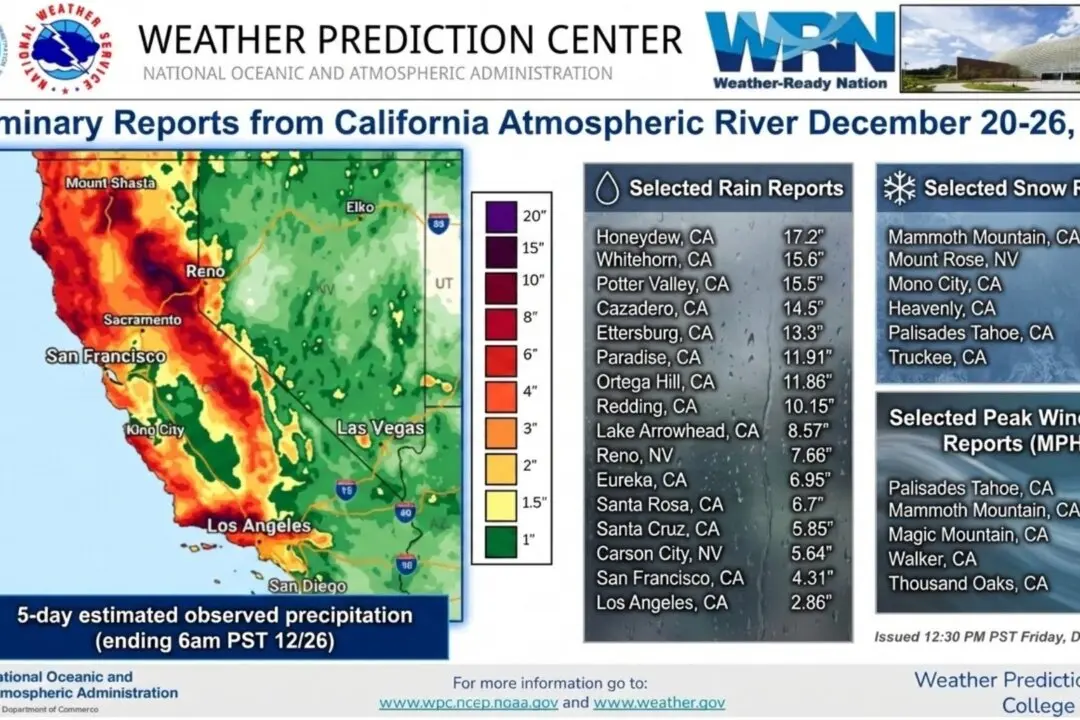The National Hurricane Center projects that Hurricane Helene will become a Category 4 hurricane by 2 p.m. EDT on Sept. 26, boasting winds of more than 132 miles per hour.
Helene was spotted 460 miles south-southwest of Apalachicola, Florida—a town within the expected landfall area—boasting winds of 85 mph at 5 p.m. EDT on Sept. 25. Hurricane-force winds (74 mph and greater) extend 25 miles out from its center while tropical storm-force winds (39–73 mph) are recorded 345 miles out.





